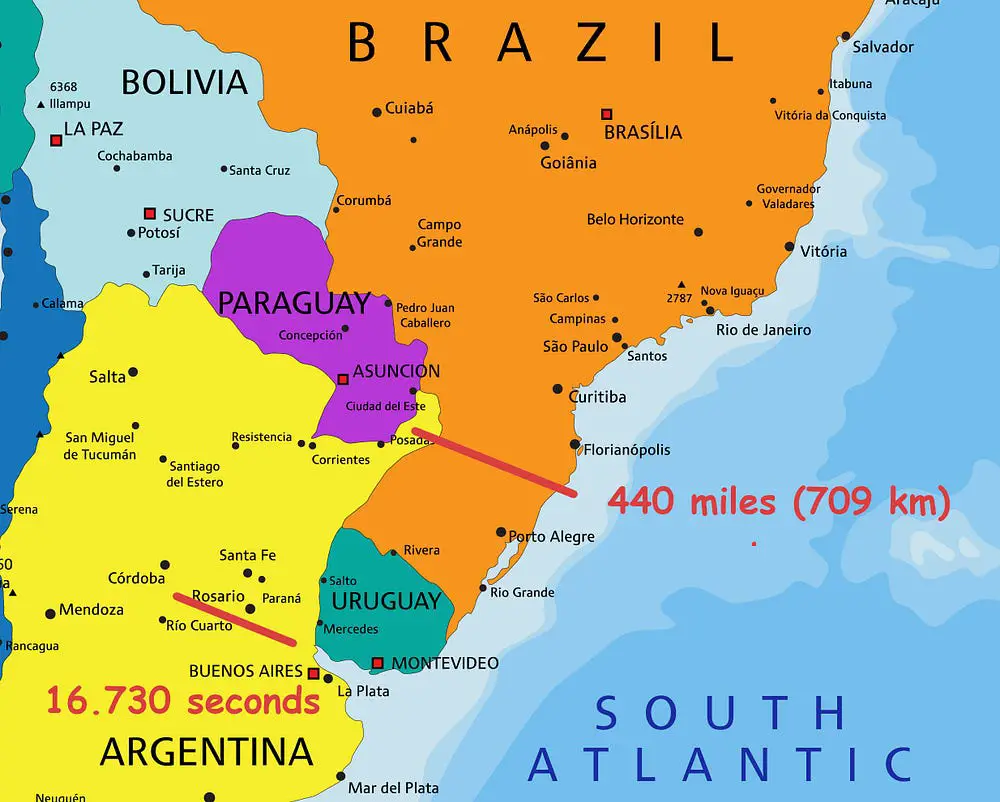Lightning is one of nature’s most amazing and potentially deadly events. Most lightning lasts for one to two seconds and travels a few miles, but two record-breaking lightning bolts shattered all the norms for what is typically seen when lightning strikes.
During a giant thunderstorm over southern Brazil on October 31, 2018, lightning shot 440.6 miles (709 km) across the sky from the Atlantic Ocean across Brazil and into Argentina. The distance was equivalent to the distance from Boston to Washington DC. The lightning bolt shattered the previous record holder when lightning flashed over Oklahoma on June 20, 2007, for a distance of 199.5 miles (321 km).
But another lightning strike holds the record for the longest duration lightning flash. A flash of lightning over northern Argentina on March 4, 2019, lasted for an astonishing 16.73 seconds, more than doubling the previous record of 7.74 seconds from lightning that flashed over Provence-Alpes-Côte d’Azur, France, in 2012. The longest lightning flash and longest duration of lightning records were certified by the World Meteorological Organization (WMO) Committee on Weather and Climate Extremes.
These incredible lightning events were the result of a giant collection of thunderstorms that act as a single storm, a phenomenon known as a “Mesoscale Convective System,” or MCS. These storms allow a massive buildup of charge, which gives way for lightning to flash a long duration and distance. The storms can be 60 miles (96.6 km) across and hundreds of miles long, especially in the summer months. The massive lightning strikes associated with these storms are known as “megaflashes,” which spread horizontally. South America, it just so happens, is ideal for these huge storms.
The lightning was measured by the GOES-16 weather satellite that maps lightning occurring over North and South America. An instrument called the Geostationary Lightning Mapper (GLM) on the satellite detects light given off from lightning during the day and night at the cloud tops.
The WMO has some grim records that have been accepted for lightning extremes. The most people killed by a direct lightning strike happened in 1975 when 21 people were killed by a single flash of lighting in Zimbabwe as they huddled for safety in a hut. The most people killed by an indirect strike of lightning occurred in Dronka, Egypt, in 1994, when 469 people were killed when lightning struck oil tanks, causing burning oil to flood the town.
Due to the dangers of lightning, the WMO recommends people follow the 30–30 rule. If the time between thunder and a flash of lightning is less than 30 seconds, people are instructed to go inside for at least 30 minutes after the last lightning flash.
Sources: Discover Magazine, Smithsonian Magazine, WMO



